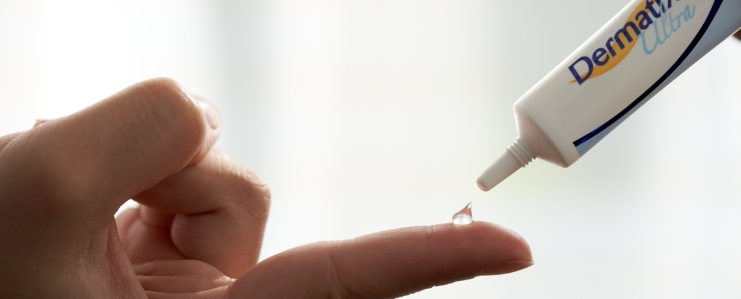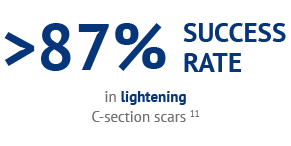While C-sections are considered a safe procedure, many women are understandably concerned about scarring, pain from the procedure, and other potential issues.
We hear you, and are here to alleviate your concerns with answers to common questions about C-section scars, pain management, healing and more.
Is pain after surgery common?
According to studies, about 1 in 4 women who undergo a C-section may develop chronic pain after surgery.1 However, there are definitely ways to manage this pain – and possibly even prevent it from happening.
Some commonly identified solutions are to:

Quit smoking:
Stopping or reducing nicotine intake during pregnancy isn’t just good for your baby, it also reduces the risk of chronic pain following a C-section.

Reduce pre-surgery anxiety:
Suggestions for doing so include talking to others about your concerns, exercising, and practising relaxation techniques (like slow, deep breathing).2 Studies also suggest that listening to music before surgery can relieve anxiety.3

Medication:
Ibuprofen, acetaminophen4 and Intrathecal opioids5 are also used to provide effective pain relief in the post-operative period. Do speak to your doctor on the right dosage to smoothen your post-surgery recovery.
But what if pain persists? Be it acute or chronic pain, effective pain management depends on the use of a combination of methods. This may include the use of a heating pad or warm washcloth, along with the use of some milder pain medications (like the aforementioned ibuprofen and acetaminophen).6, 7
Caring for your C-section scar
Your doctor will likely advise you to keep the cut bandaged, and to change the bandages often. With most C-section wounds closed with surgical staples, stitches or surgical glue, removing bandages for showers (and to keep the wound clean) is possible. But do check with your doctor, just in case.
To clean your wound, wash lightly with mild soap, before patting it dry. Stay away from baths, hot tubs and swimming pools until the doctor gives the green light. Also, be on the lookout for signs of infection. If your cut is red, swollen or warm to the touch, leaking discharge or bleeding, or should you develop a fever or worsening pain, please inform your doctor immediately.8

For an optimal healing process, hold off any lifting heavier than your baby for at least 2 weeks. For those uncontrollable moments of laughter, sneezing or coughing, you'll want to hold your stomach to support it. And here's a nifty tip for your diet – fibre-rich foods provide nutrients to reduce inflammation and promote healing. Time to indulge in salmon, berries, and different kinds of nuts!9
But know that as your C-section wound heals, there may be an overproduction of collagen – and this excess collagen, accumulating over a wound, is what may result in a raised scar. If this happens, there are safe topical scar treatments like Dermatix® Ultra that you can turn to.

We hope these tips give you newfound confidence in managing your C-section pain and scar, so you can leave your worries aside and focus on what’s most important – caring for your beautiful bundle of joy and being an amazing mum!






